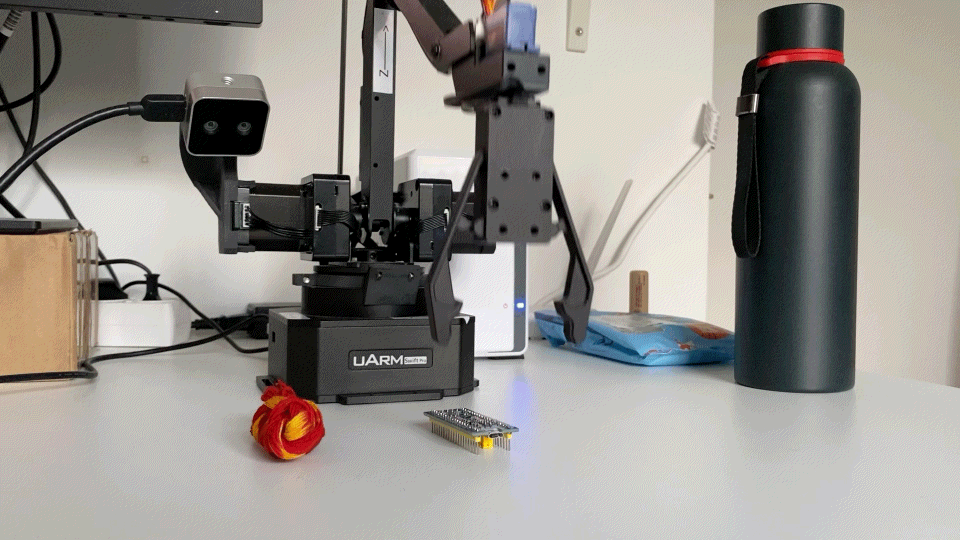Project Overview
This research and development project, conducted for Bosch und Siemens Group, explores household robotics by integrating a low-cost 3-DoF robotic manipulator with a vacuum cleaning robot. The goal is to enable autonomous detection of common small objects on the floor, grasping, and placing them at a fixed position to assess feasibility in a household setting. Additionally, the project investigates the integration of various technologies and feasibility analysis to bring it to the market.

Key Features Implemented
- PCA for Position Estimation: Tried & applied Principal Component Analysis (PCA) to determine object orientation and grasping points.
- ROS to ROS2 Porting: Developed C++ robot drivers code from ROS to ROS2 for enhanced performance and modularity.
- Path Planning and Collision Avoidance: Integrated with MoveIt2 by creating ROS2 moveit packages for trajectory planning and obstacle avoidance with different planners.
- Simple Grasping Strategy: Utilized a two-finger gripper with an additional Z-axis rotation for effective object manipulation.
- Framework Integration: Integrated various modules in ROS2, developed by other team members into a cohesive system.
- Deep Learning for Object Detection: Integrated a neural network-based object detection model to identify objects in real time.
Technologies Used
- Programming Language: C++, Python
- Robotics Framework: ROS2, MoveIt2
- Deep Learning: Pytorch and COCO object detection models for object detection
- Mathematical Methods: Principal Component Analysis (PCA)
- Hardware: Vacuum cleaning robot with a mounted 3-DoF manipulator and a two-finger gripper
Results
The system successfully detected, grasped, and placed objects with a good success rate (for simple objects (rectangular, cylindrical shapes) - as the hardware is constrained ). The integration of deep learning, PCA-based grasping, and MoveIt-enabled motion planning provided an efficient solution for autonomous object manipulation.
Future Work
- Improve grasp stability using advanced grasping strategies.
- Enhance deep learning model accuracy for better object detection.
- Extend compatibility with different robot platforms (without having constraints).